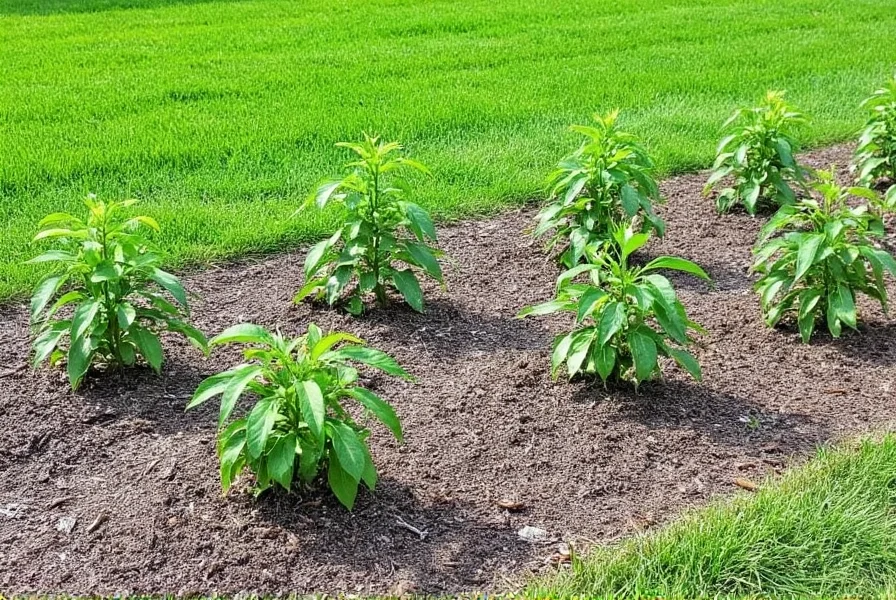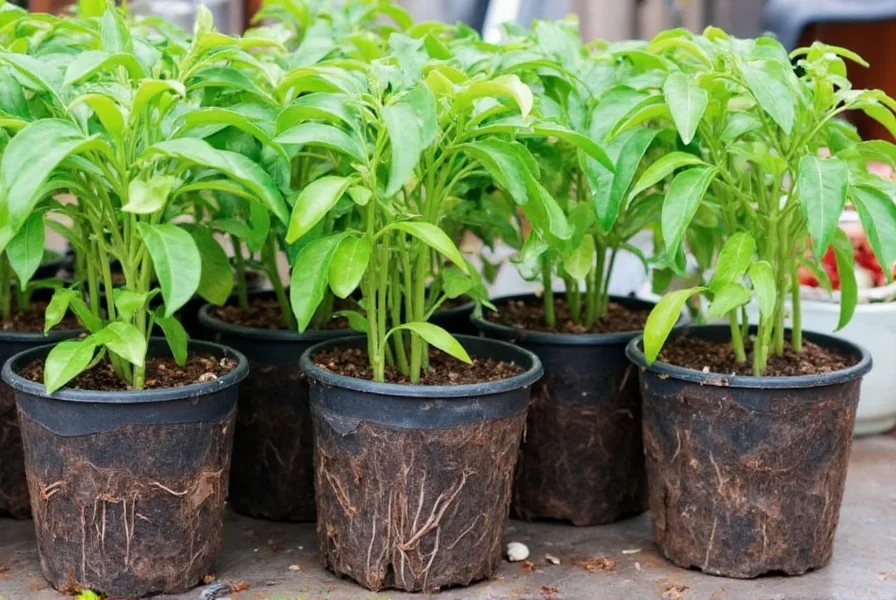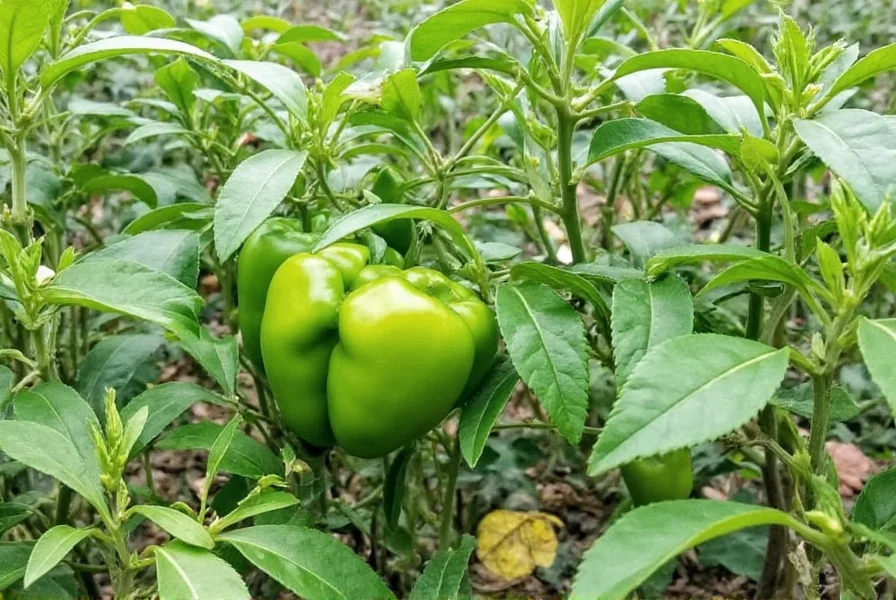Proper spacing for pepper plants is 18-24 inches apart within rows and 24-36 inches between rows for most varieties. Bell peppers need 18-24 inches spacing while hotter chili varieties like jalapeños can be planted slightly closer at 15-18 inches. Container-grown peppers require at least 12 inches between plants in pots 12 inches or larger in diameter.
Getting pepper plant spacing right is one of the most critical yet overlooked aspects of successful pepper cultivation. Whether you're growing sweet bell peppers, fiery habaneros, or anything in between, proper spacing directly impacts your harvest quality, disease resistance, and overall plant health. This comprehensive guide provides science-backed spacing recommendations that work for gardeners at all experience levels.
Why Proper Spacing Matters for Pepper Plants
Pepper plants require adequate space to develop strong root systems, maximize sunlight exposure, and maintain proper air circulation. When plants are crowded:
- Reduced airflow increases humidity around foliage, creating ideal conditions for fungal diseases like powdery mildew and blossom end rot
- Competition for nutrients and water stunts growth and reduces fruit production
- Difficulty accessing plants for harvesting and maintenance
- Increased pest problems as insects move easily between crowded plants
Research from agricultural extension services consistently shows properly spaced pepper plants produce 30-50% higher yields with better quality fruit compared to overcrowded plantings.

Spacing Requirements by Pepper Type
Not all peppers have identical spacing needs. Consider these specific recommendations when planning your garden layout:
| Pepper Variety | Spacing Within Rows | Spacing Between Rows | Special Considerations |
|---|---|---|---|
| Bell Peppers | 18-24 inches | 24-36 inches | Larger varieties need maximum spacing |
| Jalapeños | 15-18 inches | 24-30 inches | Can tolerate slightly closer spacing |
| Habaneros | 18-24 inches | 30-36 inches | Require excellent airflow due to disease susceptibility |
| Thai Chilies | 12-15 inches | 24-30 inches | Smaller plants can be spaced closer |
| Sweet Banana Peppers | 15-18 inches | 24-30 inches | Similar to jalapeño spacing requirements |
Adjusting Spacing for Different Growing Conditions
Your ideal pepper plant spacing may need adjustment based on several environmental factors:
Soil Quality and Fertility
In rich, well-amended soil with high organic matter, pepper plants develop more extensive root systems and benefit from slightly wider spacing (add 2-3 inches). In poorer soils, plants may stay smaller, allowing for marginally closer spacing.
Climate Considerations
Gardeners in humid regions should increase spacing by 10-15% to improve airflow and reduce disease pressure. In arid climates with excellent natural airflow, you might reduce spacing slightly without negative consequences.
Container Growing Spacing Guidelines
When growing peppers in containers, follow these spacing recommendations:
- 12-inch diameter pots: One plant per container
- 14-16 inch pots: One standard pepper plant or two compact varieties
- Grow bags (10 gallon): 2-3 plants depending on variety
- Window boxes: Space plants 10-12 inches apart

Step-by-Step Guide to Proper Pepper Plant Spacing
Follow these steps for optimal pepper plant arrangement in your garden:
- Prepare your garden bed by removing weeds and amending soil with compost
- Mark your rows using string and stakes to ensure straight lines
- Determine final spacing based on your specific pepper variety and growing conditions
- Create planting holes at the appropriate intervals using a measuring tape
- Position plants with the root ball slightly below soil level
- Backfill with soil and water thoroughly to eliminate air pockets
- Apply mulch around plants (but not touching stems) to conserve moisture
Common Pepper Spacing Mistakes to Avoid
Even experienced gardeners sometimes make these spacing errors:
- Planting too close to garden edges - Leave at least 12 inches from bed edges for proper root development
- Ignoring mature plant size - Research your specific variety's expected spread
- Spacing based on seedling size - Always plan for the plant's mature dimensions
- Not accounting for trellising - Vertical growing requires different spacing than bush varieties
- Overcrowding for higher yield - This actually reduces total production through competition
Companion Planting with Peppers
When planning your garden layout, consider these companion plants that work well with peppers when properly spaced:
- Onions and garlic - Repel pests, can be planted 6-8 inches from pepper plants
- Carrots - Shallow roots don't compete, plant between pepper rows
- Marigolds - Plant around garden perimeter to deter nematodes
- Basil - Improves flavor, plant 12-18 inches away from peppers
Avoid planting peppers near fennel or kohlrabi, which can inhibit their growth. Also, don't plant peppers in the same spot year after year to prevent soil-borne diseases.
Monitoring and Adjusting Spacing After Planting
Proper spacing doesn't end at planting time. Monitor your pepper plants throughout the growing season:
- Check plant development every 2-3 weeks for signs of overcrowding
- Look for yellowing leaves, especially on inner branches, which indicates poor air circulation
- Prune selectively if plants begin to encroach on each other's space
- Consider thinning if you notice stunted growth or reduced fruit set
Remember that proper pepper plant spacing isn't just about initial planting—it's an ongoing consideration throughout the growing season that directly impacts your harvest quality and quantity.
Frequently Asked Questions
What happens if I plant pepper plants too close together?
Planting pepper plants too close together leads to reduced air circulation, increased disease susceptibility, competition for nutrients and water, and lower overall yields. Crowded plants often develop fungal diseases like powdery mildew and produce fewer, smaller fruits due to resource competition.
Can I grow two pepper plants in one 5-gallon bucket?
While possible for compact varieties, it's generally not recommended to grow two pepper plants in a single 5-gallon container. Each pepper plant needs adequate root space, and two plants will compete for nutrients and water, resulting in reduced yields. For best results, use one plant per 5-gallon container, or choose a larger 10-gallon container if growing two smaller pepper varieties.
How does spacing affect pepper plant yield?
Proper spacing directly impacts pepper plant yield. Research shows correctly spaced plants produce 30-50% higher yields than overcrowded plants. Adequate spacing allows for better sunlight exposure, improved air circulation, and reduced competition for nutrients and water, all contributing to more and larger fruits.
Should I space bell peppers differently than hot peppers?
Yes, bell peppers generally need more space than most hot pepper varieties. Bell peppers require 18-24 inches between plants while many hot peppers like jalapeños can be spaced slightly closer at 15-18 inches. Larger hot varieties like habaneros still need the full 18-24 inch spacing due to their size and disease susceptibility.
Can I adjust pepper plant spacing after they've started growing?
While it's best to get spacing right at planting time, you can make adjustments as plants grow. If plants become overcrowded, carefully thin them by removing the weakest specimens. You can also prune side branches to improve air circulation. However, transplanting established pepper plants is risky and should be avoided unless absolutely necessary, as peppers don't handle root disturbance well.











 浙公网安备
33010002000092号
浙公网安备
33010002000092号 浙B2-20120091-4
浙B2-20120091-4